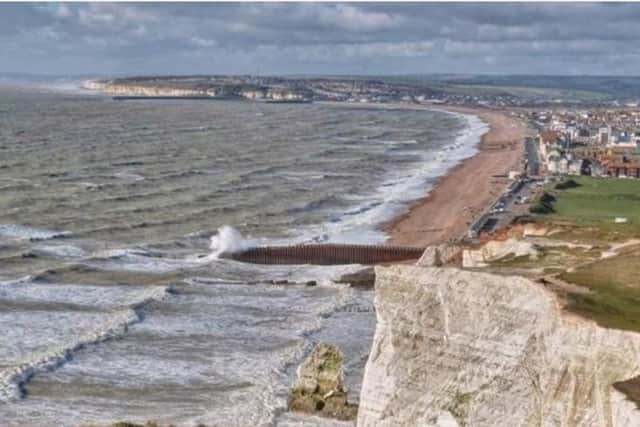These Sussex bathing waters were rated as ‘excellent’ by the Environment Agency
and live on Freeview channel 276
According to the Environment Agency 96% of bathing waters in South East England have met minimum standards, with 90% of these bathing waters being rated as ‘good’ or ‘excellent’, continuing to show an overall boost in water quality over the last decade.
Maria Caulfield MP said: “I very much welcome that our local bathing waters have been classified with the highest rating standard, government initiatives such as our ‘Plan for Water’ will strengthen this with the Government investing around £1.6 billion to reduce sewage discharges, reduce nutrient pollution, and increase the supply of water.”
Advertisement
Hide AdAdvertisement
Hide AdThis compares to just 28% in England being rated as ‘good’ or ‘excellent’ in the 1990s and 76% in 2010.


This year’s bathing water results show that 96% met/exceeded minimum standards, of which nearly 90% met the highest standards of Excellent or Good and 6% achieving Sufficient. This means there has been a slight fall in standards this year.
Bathing water quality has improved substantially since the early 1990s when just 28% of bathing waters in England met the highest standards in force at that time. Regulation and investment over several decades have driven significant improvements to our coastal bathing waters.
Environment Agency Chair Alan Lovell said: “Many people enjoy time in or on lakes, rivers and coastal waters, and we know the value they bring in terms of social, health and wellbeing benefits. While overall bathing water quality has improved over the last decade due to targeted investment, robust regulation from the Environment Agency and work carried out by partners, these results show there is significant work still to do to ensure the quality of our bathing waters is increasing every year.
Advertisement
Hide AdAdvertisement
Hide Ad“The slight fall in standards this year show we must go further to drive improvements and that this takes time and investment. That’s why we are strengthening our regulation and working with the water sector, farmers, industry and others to help them put the environment the heart of their activities and improve our bathing waters for all.”
The fall in standards in the past year is likely in part due to an unseasonably wet summer causing run off, according to the Environment Agency.
In 2022, Eastbourne bathing water moved to ‘Sufficient’ which prompted an investigation by the Environment Agency. It was discovered that a privately owned sewer had been discharging into the sea. As a result of these investigations, the sewer was repaired, and the classification has now moved up to ‘Good’.
Hastings Pelham bathing water was at risk of being classified as ‘poor’ in 2019, but following extensive monitoring by The Environment Agency, it was discovered that there were issues with misconnections. The EA, Hastings Council and Southern Water worked together to install screens in a stream that ran out to this stretch of coastline. This resulted in improvements to the local water quality and as a result the classification of the site was not downgraded.
The classifications for 2023 are based on data from 2019, 2021, 2022 and 2023 with a gap in 2020 due to the pandemic impacting our monitoring and sampling activity.